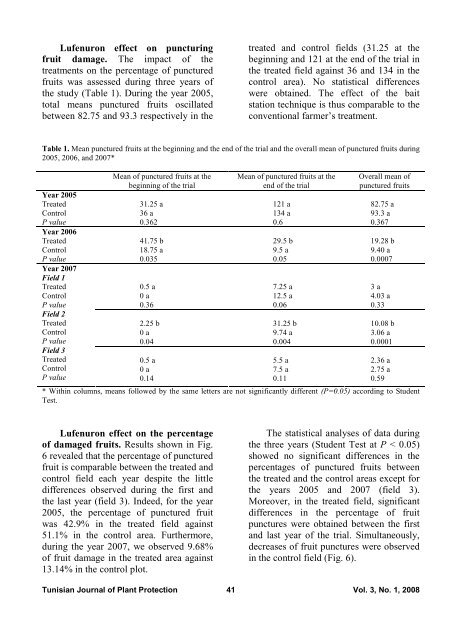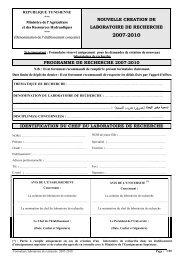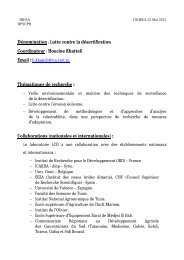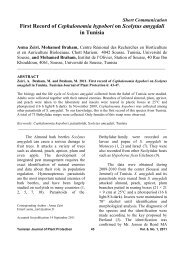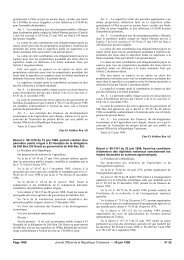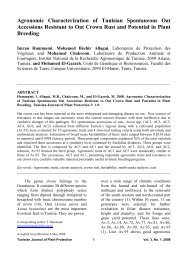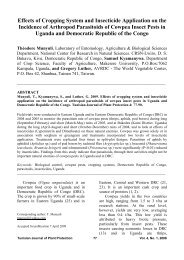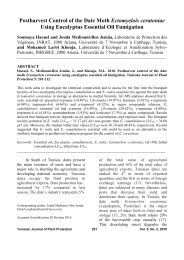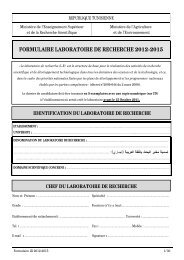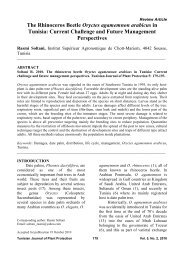Efficacy of the Lufenuron Bait Station Technique to Control ... - Iresa
Efficacy of the Lufenuron Bait Station Technique to Control ... - Iresa
Efficacy of the Lufenuron Bait Station Technique to Control ... - Iresa
Create successful ePaper yourself
Turn your PDF publications into a flip-book with our unique Google optimized e-Paper software.
<strong>Lufenuron</strong> effect on puncturingfruit damage. The impact <strong>of</strong> <strong>the</strong>treatments on <strong>the</strong> percentage <strong>of</strong> puncturedfruits was assessed during three years <strong>of</strong><strong>the</strong> study (Table 1). During <strong>the</strong> year 2005,<strong>to</strong>tal means punctured fruits oscillatedbetween 82.75 and 93.3 respectively in <strong>the</strong>treated and control fields (31.25 at <strong>the</strong>beginning and 121 at <strong>the</strong> end <strong>of</strong> <strong>the</strong> trial in<strong>the</strong> treated field against 36 and 134 in <strong>the</strong>control area). No statistical differenceswere obtained. The effect <strong>of</strong> <strong>the</strong> baitstation technique is thus comparable <strong>to</strong> <strong>the</strong>conventional farmer’s treatment.Table 1. Mean punctured fruits at <strong>the</strong> beginning and <strong>the</strong> end <strong>of</strong> <strong>the</strong> trial and <strong>the</strong> overall mean <strong>of</strong> punctured fruits during2005, 2006, and 2007*Year 2005Treated<strong>Control</strong>P valueYear 2006Treated<strong>Control</strong>P valueYear 2007Field 1Treated<strong>Control</strong>P valueField 2Treated<strong>Control</strong>P valueField 3Treated<strong>Control</strong>P valueMean <strong>of</strong> punctured fruits at <strong>the</strong>beginning <strong>of</strong> <strong>the</strong> trial31.25 a36 a0.36241.75 b18.75 a0.0350.5 a0 a0.362.25 b0 a0.040.5 a0 a0.14Mean <strong>of</strong> punctured fruits at <strong>the</strong>end <strong>of</strong> <strong>the</strong> trial121 a134 a0.629.5 b9.5 a0.057.25 a12.5 a0.0631.25 b9.74 a0.0045.5 a7.5 a0.11Overall mean <strong>of</strong>punctured fruits82.75 a93.3 a0.36719.28 b9.40 a0.00073 a4.03 a0.3310.08 b3.06 a0.00012.36 a2.75 a0.59* Within columns, means followed by <strong>the</strong> same letters are not significantly different (P=0.05) according <strong>to</strong> StudentTest.<strong>Lufenuron</strong> effect on <strong>the</strong> percentage<strong>of</strong> damaged fruits. Results shown in Fig.6 revealed that <strong>the</strong> percentage <strong>of</strong> puncturedfruit is comparable between <strong>the</strong> treated andcontrol field each year despite <strong>the</strong> littledifferences observed during <strong>the</strong> first and<strong>the</strong> last year (field 3). Indeed, for <strong>the</strong> year2005, <strong>the</strong> percentage <strong>of</strong> punctured fruitwas 42.9% in <strong>the</strong> treated field against51.1% in <strong>the</strong> control area. Fur<strong>the</strong>rmore,during <strong>the</strong> year 2007, we observed 9.68%<strong>of</strong> fruit damage in <strong>the</strong> treated area against13.14% in <strong>the</strong> control plot.The statistical analyses <strong>of</strong> data during<strong>the</strong> three years (Student Test at P < 0.05)showed no significant differences in <strong>the</strong>percentages <strong>of</strong> punctured fruits between<strong>the</strong> treated and <strong>the</strong> control areas except for<strong>the</strong> years 2005 and 2007 (field 3).Moreover, in <strong>the</strong> treated field, significantdifferences in <strong>the</strong> percentage <strong>of</strong> fruitpunctures were obtained between <strong>the</strong> firstand last year <strong>of</strong> <strong>the</strong> trial. Simultaneously,decreases <strong>of</strong> fruit punctures were observedin <strong>the</strong> control field (Fig. 6).Tunisian Journal <strong>of</strong> Plant Protection 41Vol. 3, No. 1, 2008


